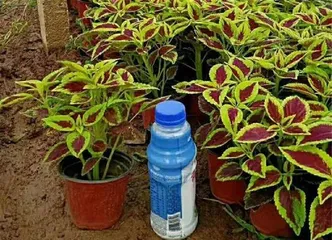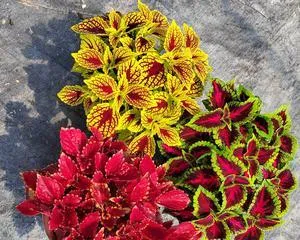Coleus is a very beautiful plant, loved by many for its colorful leaves. However, during the winter, its living environment changes significantly. So, how can we ensure that coleus gets sufficient protection in the cold months? Let's take a detailed look at the complete guide for overwintering coleus.

Do not overwater
In winter, the amount of water for coleus should be appropriately reduced, not excessive. Overwatering can lead to high groundwater levels, affecting the respiration of the plant's roots.
Maintain good ventilation
In the humid atmosphere of winter, it is easy for harmful substances such as bacteria and mold to grow on the leaves. Therefore, it is important to ensure good ventilation, especially on overcast and rainy days.

Pay attention to foliar spraying and fertilizer use
Winter is a slow period for plant growth, so the frequency of foliar spraying and fertilizing should be reduced. Excessive foliar spraying can cause leaf rot, and over-fertilizing can burn the plant.
Pay attention to winter insulation
The winter weather is cold, and certain insulation measures are needed. You can cover the plant with some straw or other materials to prevent it from freezing to death.
Avoid direct sunlight
Although the winter sun is not as strong as in the summer, it can still damage coleus. Therefore, direct sunlight should be avoided as much as possible. You can set up some shading devices above the plant.

Maintain appropriate soil moisture
In winter, the soil moisture should be kept moderate. If the soil is too dry, the plant will lack water; if it is too wet, the plant's roots will rot. Therefore, the soil moisture needs to be adjusted according to the plant's needs.
Pay attention to pest control
There are fewer pests in winter, but prevention and control cannot be relaxed. Biological pesticides and other methods can be used for control to avoid a significant impact on the plant.
Remove snow in time
When it snows in winter, the accumulated snow should be cleared in time to avoid crushing or freezing the plant to death.
Reduce manual intervention
Winter is a slow period for plant growth, so manual intervention should be minimized. Do not prune the plant frequently to avoid causing damage.
Provide wind protection
In winter, cold winds can cause significant damage to plants. Therefore, wind protection is necessary. Choose appropriate windbreaks to protect the coleus.
Pay attention to temperature changes
When the weather is changeable in winter, the living environment for coleus will also change greatly. Therefore, pay attention to temperature changes and take timely measures to adjust accordingly.
Appropriately increase light exposure time
When the days are shorter in winter, the light exposure time can be moderately increased to promote the plant's growth and development.
Regularly clean up fallen leaves
In winter, coleus may shed leaves. Therefore, fallen leaves need to be cleaned up regularly to ensure the plant receives sufficient nutrients.
Pay attention to the plant's health status
In winter, it is necessary to often observe the plant's health status, discover problems in time, and deal with them.
Coleus is a very beautiful plant and requires special care in winter. The above is the complete guide for overwintering coleus. We hope everyone can follow the methods mentioned above to provide a good environment for the healthy growth of the plant.